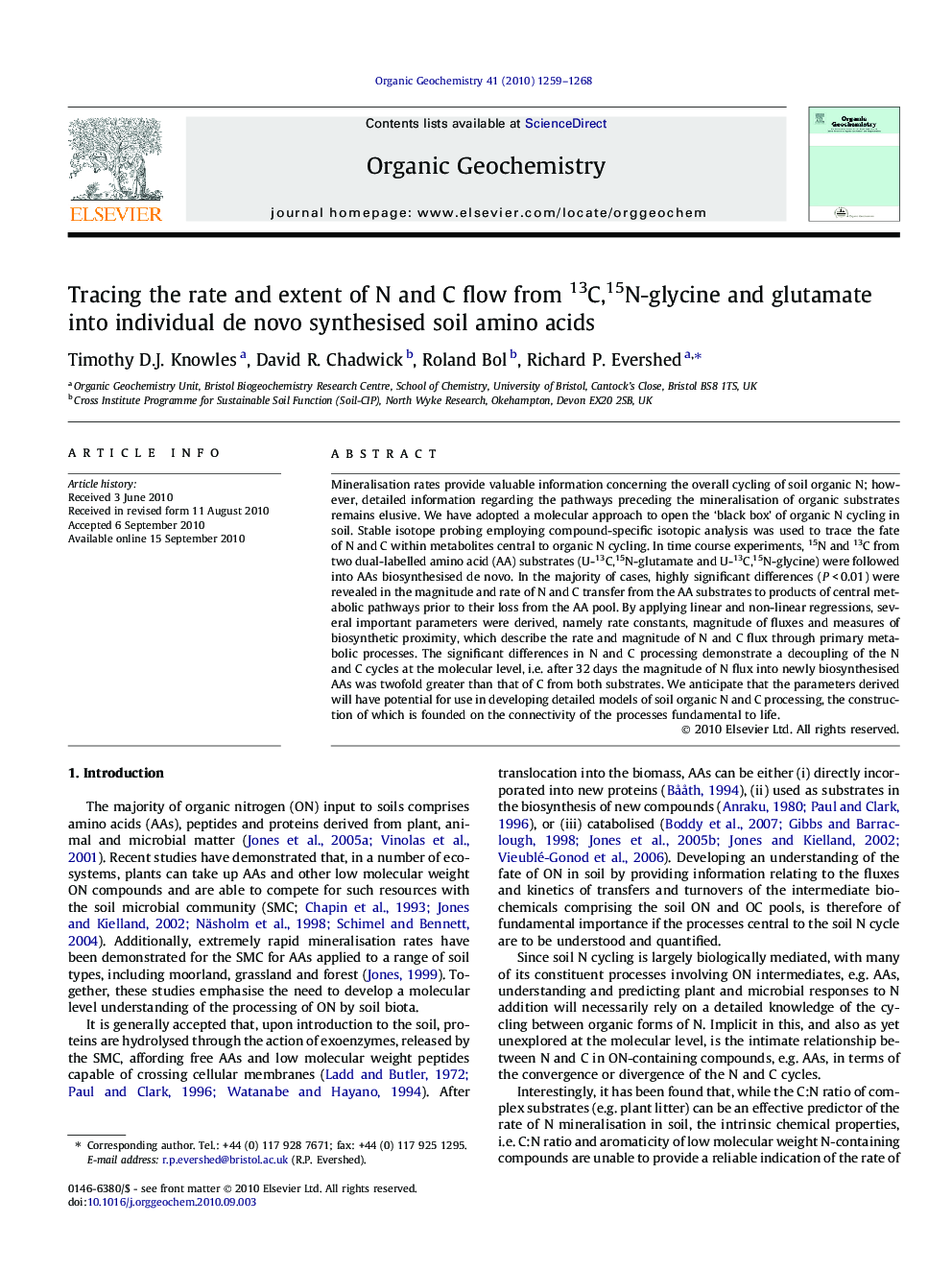| Article ID | Journal | Published Year | Pages | File Type |
|---|---|---|---|---|
| 5162561 | Organic Geochemistry | 2010 | 10 Pages |
Abstract
Mineralisation rates provide valuable information concerning the overall cycling of soil organic N; however, detailed information regarding the pathways preceding the mineralisation of organic substrates remains elusive. We have adopted a molecular approach to open the 'black box' of organic N cycling in soil. Stable isotope probing employing compound-specific isotopic analysis was used to trace the fate of N and C within metabolites central to organic N cycling. In time course experiments, 15N and 13C from two dual-labelled amino acid (AA) substrates (U-13C,15N-glutamate and U-13C,15N-glycine) were followed into AAs biosynthesised de novo. In the majority of cases, highly significant differences (PÂ <Â 0.01) were revealed in the magnitude and rate of N and C transfer from the AA substrates to products of central metabolic pathways prior to their loss from the AA pool. By applying linear and non-linear regressions, several important parameters were derived, namely rate constants, magnitude of fluxes and measures of biosynthetic proximity, which describe the rate and magnitude of N and C flux through primary metabolic processes. The significant differences in N and C processing demonstrate a decoupling of the N and C cycles at the molecular level, i.e. after 32Â days the magnitude of N flux into newly biosynthesised AAs was twofold greater than that of C from both substrates. We anticipate that the parameters derived will have potential for use in developing detailed models of soil organic N and C processing, the construction of which is founded on the connectivity of the processes fundamental to life.
Related Topics
Physical Sciences and Engineering
Chemistry
Organic Chemistry
Authors
Timothy D.J. Knowles, David R. Chadwick, Roland Bol, Richard P. Evershed,
